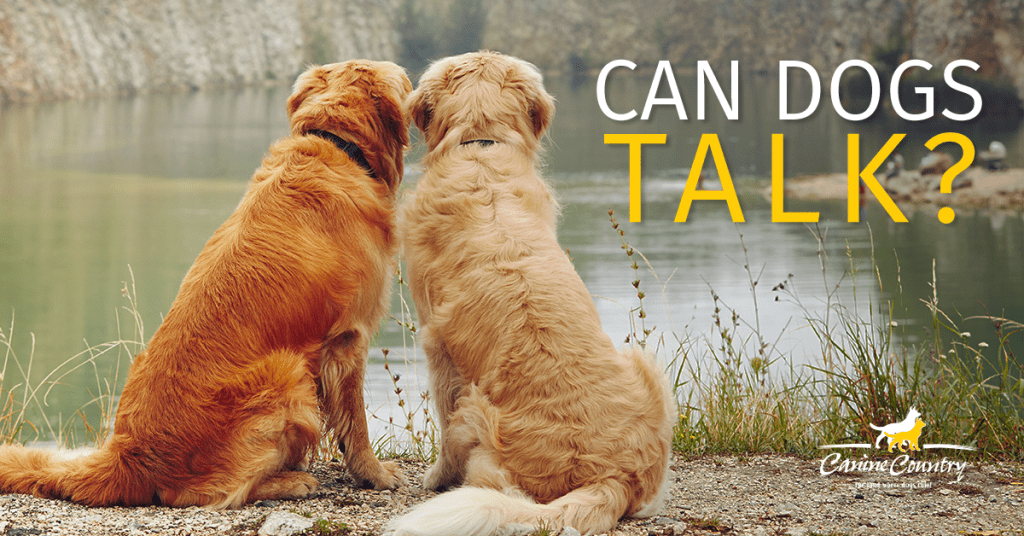Have you ever wondered if your dog and cat are having secret conversations behind your back? The idea of dogs talking to cats might sound like something out of a children's cartoon, but there's more to this concept than meets the eye. While dogs and cats don’t communicate verbally in the human sense, they do interact using a combination of body language, vocalizations, and behavioral cues. Understanding these interactions can give you insight into how your furry friends bond and coexist. This article dives deep into the world of canine-feline communication, exploring whether dogs can "talk" to cats in their own unique way.
Communication between species is fascinating, especially when it involves two animals as different as dogs and cats. Dogs are pack animals that thrive on social interaction, while cats are more independent and territorial. Despite these differences, many households have successfully integrated both animals into a harmonious living environment. But what exactly happens when a dog approaches a cat? How do they understand each other? We’ll explore these questions and more throughout this article, shedding light on the intricate ways dogs and cats communicate.
As pet owners, we often observe our pets interacting with one another, but we rarely stop to consider the complexity of their communication methods. By understanding how dogs and cats "talk" to each other, we can foster better relationships between our furry friends and create a peaceful coexistence. So, can dogs talk to cats? Let’s find out together by exploring the science, myths, and realities of canine-feline communication.
Read also:Everything You Need To Know About The California 1199 Foundation
Can Dogs Understand Cat Behavior?
One of the first questions that arise when discussing canine-feline communication is whether dogs can truly understand cat behavior. Dogs are highly perceptive creatures, and they rely heavily on body language to interpret the world around them. When a dog encounters a cat, it uses visual cues such as tail position, ear movement, and overall posture to gauge the cat's mood. For instance, a cat with its tail held high and ears forward may indicate friendliness, while a puffed-up tail and arched back could signal aggression.
Research suggests that dogs can learn to recognize and respond appropriately to these feline signals over time. This adaptability is especially evident in households where dogs and cats grow up together. In such environments, dogs often develop a nuanced understanding of their feline counterparts, allowing them to navigate shared spaces without conflict. However, this learning process requires patience, consistency, and sometimes a little mediation from their human companions.
How Do Cats Respond to Dogs?
Just as dogs try to understand cats, cats also adapt their behavior in response to dogs. While cats may not be as overtly social as dogs, they are capable of communicating their needs and boundaries effectively. Cats use a combination of vocalizations, body language, and scent marking to convey messages to dogs. For example, a soft purr might indicate contentment, while a hiss or growl serves as a clear warning to back off.
Interestingly, some cats even mimic dog-like behaviors when interacting with their canine housemates. Observations show that cats may wag their tails or roll onto their backs during playtime, adopting gestures typically associated with dogs. These adaptations highlight the flexibility of feline communication and suggest that cats are just as capable of "talking" to dogs as vice versa.
Can Dogs Talk to Cats Through Vocalizations?
Vocal communication is another aspect of canine-feline interaction that deserves attention. While dogs and cats have distinct vocal repertoires, they sometimes use overlapping sounds to communicate with each other. Dogs often bark or whine to get a cat's attention, while cats respond with meows, chirps, or even purrs. In some cases, these vocal exchanges can lead to playful interactions or mutual understanding.
It’s important to note that vocalizations alone are rarely sufficient for effective communication between species. Instead, dogs and cats rely on a combination of verbal and non-verbal cues to convey their intentions. This multimodal approach ensures that messages are clear and reduces the likelihood of misunderstandings. As pet owners, we can support this process by encouraging positive interactions and providing opportunities for our pets to bond.
Read also:Discover The Hidden Gem Of Berthoud Falls Cascades
Why Do Dogs and Cats Misunderstand Each Other?
Despite their ability to communicate, dogs and cats occasionally misunderstand each other. These misunderstandings often stem from differences in communication styles and temperaments. For example, a dog's enthusiastic tail wag might seem threatening to a cat, while a cat's sudden retreat could confuse a dog. Such misinterpretations can lead to tension or even conflict between the two animals.
To prevent these issues, it’s crucial to educate ourselves about the unique communication preferences of both species. By recognizing the signs of stress or discomfort in our pets, we can intervene before problems escalate. Additionally, gradual introductions, supervised interactions, and consistent training can help build trust and improve communication between dogs and cats.
What Can Pet Owners Do to Encourage Communication?
Pet owners play a vital role in fostering healthy relationships between dogs and cats. One of the best ways to encourage communication is by creating a safe and comfortable environment for both animals. This includes providing separate spaces for retreat, establishing routines, and rewarding positive interactions with treats or praise. By reinforcing good behavior, we teach our pets that cooperation leads to rewards.
Another effective strategy is to use toys and activities that promote joint play. Tug-of-war games, interactive puzzles, and scent-based games can help dogs and cats learn to work together and enjoy each other's company. Over time, these shared experiences strengthen the bond between them and enhance their ability to communicate effectively.
Can Dogs and Cats Learn Each Other's Language?
While dogs and cats may never fully master each other's "language," they can certainly learn to recognize key signals and respond accordingly. This learning process often begins during early socialization, when puppies and kittens are exposed to members of the opposite species. Early exposure helps them develop a baseline understanding of each other's behaviors and reduces the likelihood of fear-based reactions later in life.
Even older animals can benefit from cross-species training exercises designed to improve communication skills. These exercises typically involve pairing specific actions with rewards, allowing dogs and cats to associate positive outcomes with certain behaviors. With patience and persistence, even the most reluctant pets can learn to "talk" to each other in their own unique ways.
What Are the Benefits of Canine-Feline Communication?
The ability of dogs and cats to communicate effectively offers numerous benefits for both animals and their human families. For one, it reduces stress and conflict within the household, creating a more harmonious living environment. It also enhances the emotional well-being of both pets, as they form meaningful connections with each other. Furthermore, strong communication skills can improve problem-solving abilities and foster greater independence in both species.
From a practical standpoint, good communication between dogs and cats also makes daily tasks easier for pet owners. Feeding times, grooming sessions, and veterinary visits become less stressful when animals understand and respect each other's boundaries. Ultimately, fostering effective canine-feline communication is a win-win situation for everyone involved.
How Does Age Impact Can Dogs Talk to Cats?
Age plays a significant role in determining how well dogs and cats can communicate with each other. Younger animals tend to adapt more readily to cross-species interactions due to their natural curiosity and openness to new experiences. Puppies and kittens exposed to members of the opposite species during critical developmental periods often develop lifelong friendships based on mutual understanding.
However, older animals can also benefit from exposure to new social partners, albeit with some limitations. Senior dogs and cats may require more time and patience to adjust to each other's presence, but with consistent effort, they can still form strong bonds. The key is to tailor interactions to the individual needs and preferences of each animal, ensuring that both feel safe and respected.
Can Dogs Talk to Cats in Multi-Pet Households?
In multi-pet households, the dynamics of canine-feline communication become even more complex. With multiple animals vying for attention and resources, misunderstandings are bound to occur. However, with proper management and planning, these households can thrive as vibrant communities of coexisting species.
One effective strategy is to establish clear hierarchies and routines that minimize competition and promote cooperation. Assigning specific feeding areas, playtimes, and sleeping spaces can help reduce tension and encourage positive interactions. Additionally, regular check-ins with a veterinarian or animal behaviorist can ensure that all pets are thriving in their shared environment.
Conclusion: Can Dogs Talk to Cats?
While dogs and cats may not engage in verbal conversations like humans, they certainly have their own ways of communicating. Through a combination of body language, vocalizations, and behavioral cues, these two species can form deep and meaningful connections. By understanding and supporting their communication efforts, we can create a harmonious living environment where both dogs and cats thrive.
So, can dogs talk to cats? The answer is yes—within the limits of their unique communication styles. As pet owners, our role is to facilitate these interactions and celebrate the beauty of interspecies friendship. Whether through play, grooming, or simply sharing a cozy spot on the couch, dogs and cats have much to teach us about the power of communication and understanding.
Table of Contents
- Do Dogs and Cats Communicate?
- Can Dogs Understand Cat Behavior?
- How Do Cats Respond to Dogs?
- Can Dogs Talk to Cats Through Vocalizations?
- Why Do Dogs and Cats Misunderstand Each Other?
- What Can Pet Owners Do to Encourage Communication?
- Can Dogs and Cats Learn Each Other's Language?
- What Are the Benefits of Canine-Feline Communication?
- How Does Age Impact Can Dogs Talk to Cats?
- Can Dogs Talk to Cats in Multi-Pet Households?


